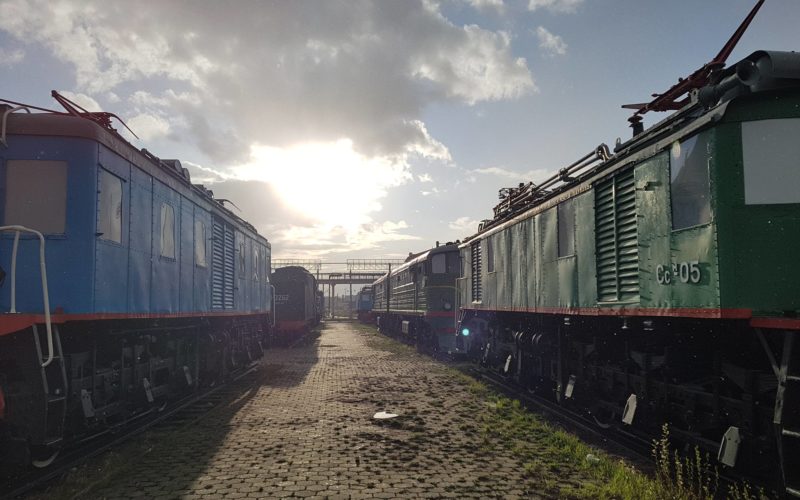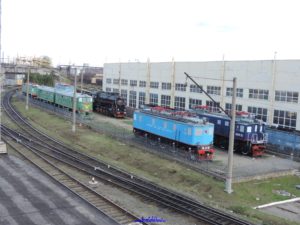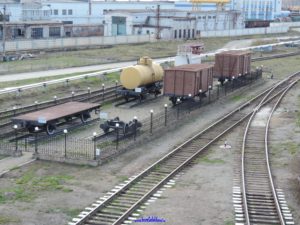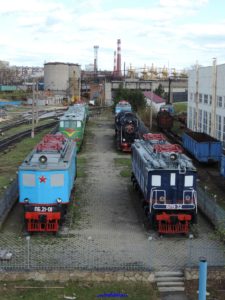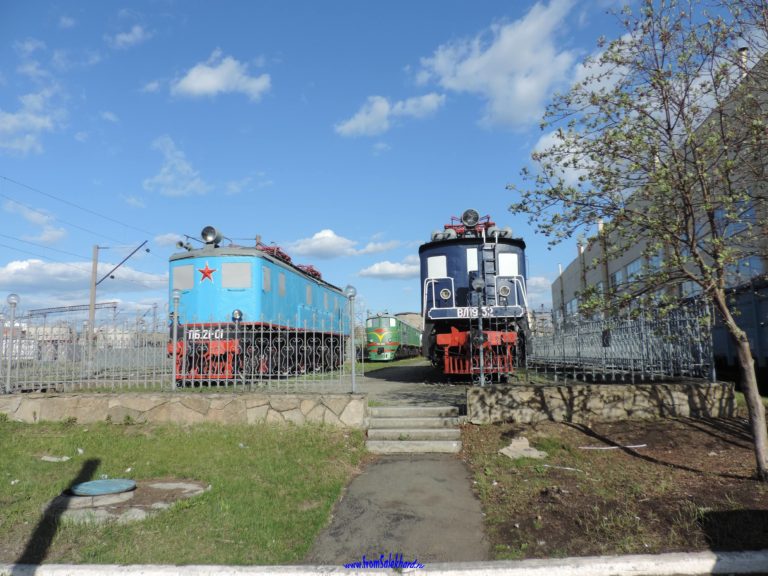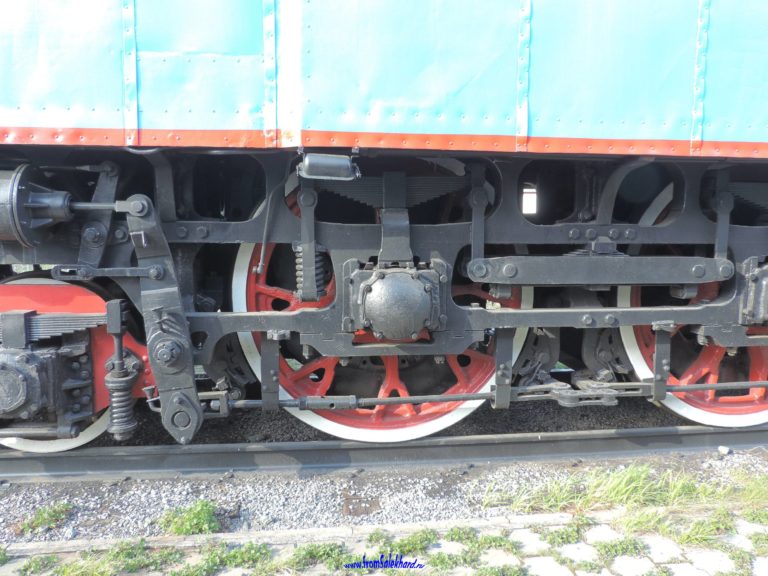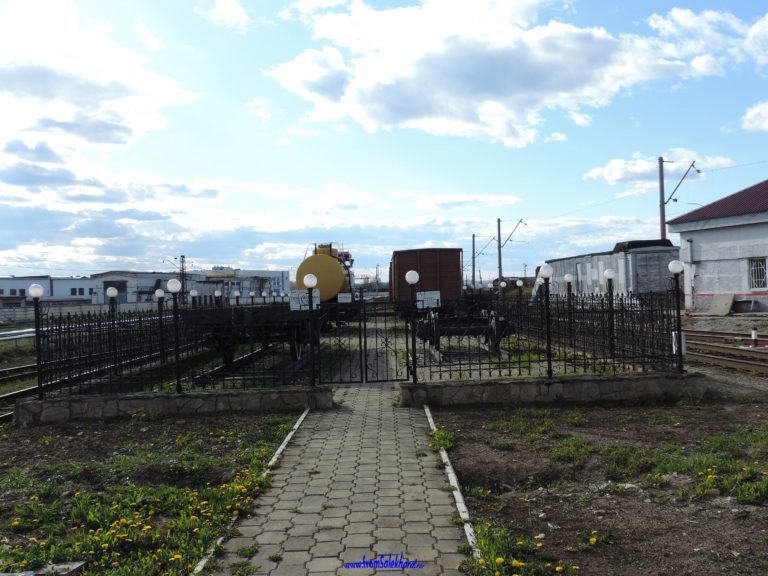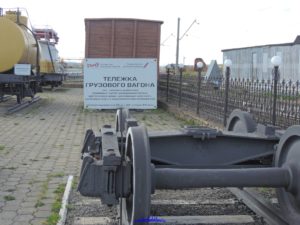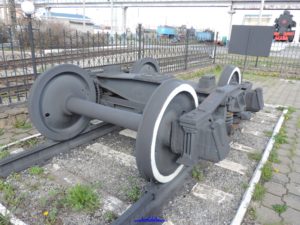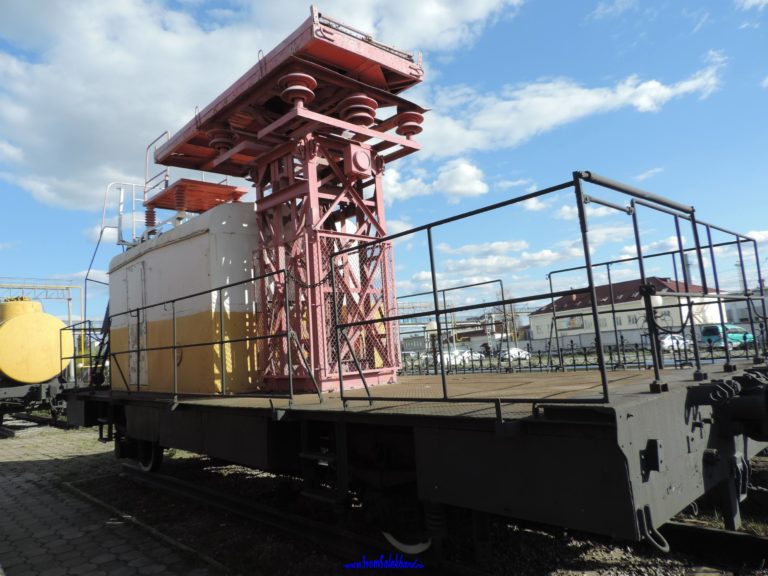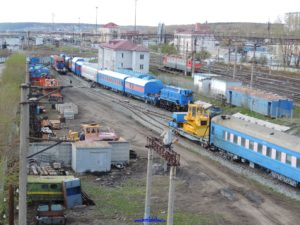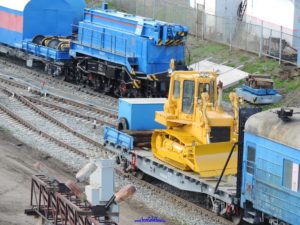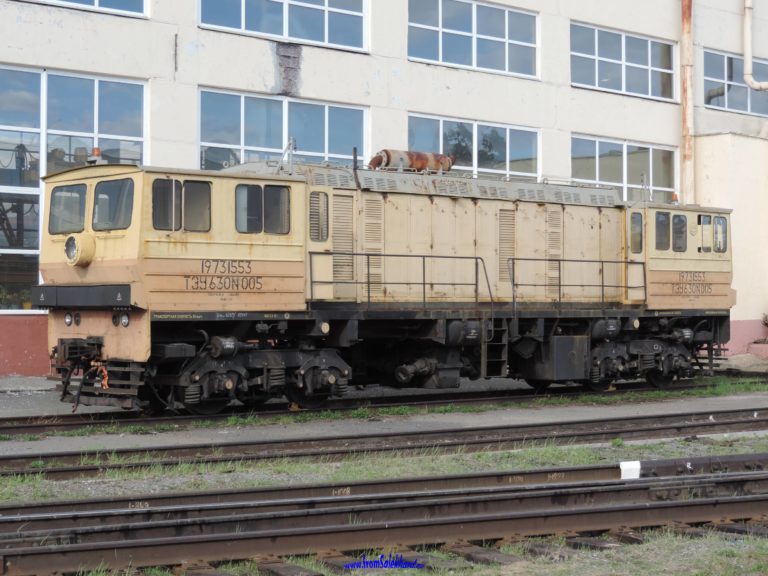Yekaterinburg Museum of Railway Transport
By fromSalekhard in My museums
A more thorough study of the map of Yekaterinburg showed that along with the Museum of the History, Science and Technology of the Sverdlovsk Railway, which I have already told you about, there is also the Yekaterinburg Museum of Railway Transport. It is located in the outskirts of the city at the Yekaterinburg-Sortirovochny railway station.
To the site, and this is precisely an open (in any sense of the word) site, you need to go along a long railway crossing. I’ve never seen anything like it, though I’ve seen a little bit of them. On the map, the length is a kilometer! But while you are walking, you are saturated with the spirit of the railway
And in the middle of this passage, you have a view of the two halves of the desired site
And when you look down, you will find a third
On a concrete pedestal, stood side by side, as in life, the steam locomotive FD21-2970 “Felix Dzerzhinsky” (1941 release) and the electric locomotive VL22m171 “Vladimir Lenin” (1946 release)
The main platform is a little further and there are 6 pieces of equipment on it – one exhibit is doubled.
And here is a visual representation of the main advantages of this demo site: it is 24/7/365 round the clock and completely free.
There are few exhibits, so you can carefully consider each.
The main cargo locomotive L-3262, produced in quantities of over 4000 from 1945 to 1955, affectionately called “Lebedyanka” or “Swan” since 1947. This particular copy was built in 1953.
Freight two-section diesel locomotive TEZ-4820. The third series because it consists of series number 1 and series number 2. They were produced from 1953 to 1973 and about 6800 units were built by three factories. This copy has been a monument since the early 2000s.
The remaining 4 exhibits are Soviet electric locomotives. And the very first. Rarities!
One of them is a close relative of Ilyich installed on a pedestal, also “Vladimir Lenin” only 19 series.
He has a typo in his passport data: he is not “VL19-32”, but “VL19-035”. However, this does not affect the impression at all. The production of Volodya, and this is the first completely self-designed Soviet electric locomotive, began in 1934, and they ended their labor activity in 1972.
A couple more electric locomotives belong to the cohort of the so-called “Surami electric locomotives”. The Suram pass – a mountainous section of the road with a long tunnel 4 km long was the first to be electrified in the USSR and all electric locomotives were tested on it.
So the letter “S” in the series is the word Surami! They were American (S10), Italian (Si) and Soviet (Ss). Here is one of the latest Ssм05 and presented.
In 1935, to replace the VL19 electric locomotive, they began to design the VL20 series with regenerative braking and a number of other improvements. And when they started mass production, they gave the designation “SK”, which made them related to Suramsky, but in real life it meant “Sergey Kirov”.
Side by side, they resemble the children’s riddle “Find differences in the picture”: some are immediately visible, and some cannot be found, but in general the picture is almost identical.
But I personally liked their fellow PB21-01 more – the first Soviet passenger electric locomotive.
It was made in 1934, repaired in 1961 and immediately decommissioned, putting a monument.
Why is it unique and what did I like? The “PB” series means “Politburo of the Central Committee of the All-Union Communist Party of Bolsheviks”, the number “01” is not a series, it is simply one, the only one, like the Politburo.
Look at his running gear (the term is not railway, but understandable)! Compare with other electric and diesel locomotives. I approached – the wheels are up to my height.
Then I looked on the Internet: the diameter is 1850 mm, i.e. even a little more than me. And what a frame!
A photograph is not able to convey the beauty of a ten-centimeter solid metal. Straight iron mammoth.
Well, let’s go to the last site.
She has the same round-the-clock and year-round operation.
Several different wagons
And a railcar DMS, which means “High-speed assembly railcar” with an engine from ZIL-130.
PS At such stations, emergency recovery trains are always hiding somewhere, which include quite attractive mechanisms.
Well, since this is an operating enterprise, sometimes interesting examples of modern rolling stock come across. Although by the appearance of this sample it is clearly determined that it is already time for it to go to the museum
It turned out that this is quite a working traction power unit TEU630, which is designed to supply power to working machines, as well as to move crushed stone cleaning complexes in working and transport modes.
But the most important thing is that when I identified this unit on the Internet, I came across this photo on the railgallery website
dated end of May. And I was there at the beginning of May. Somewhere out there, a steam locomotive that I have not seen is running around. Will have to make a repeat visit!
Tags: Railway, Yekaterinburg
